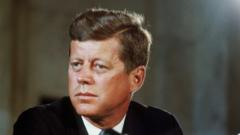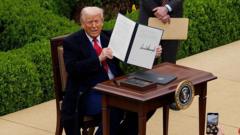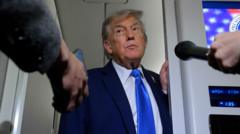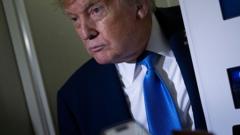Recent releases of JFK assassination files by the Trump administration provide additional context surrounding Lee Harvey Oswald's surveillance by the CIA, but still leave many questions unanswered regarding the events of 1963.**
New Insights from the Latest JFK Assassination Document Release**

New Insights from the Latest JFK Assassination Document Release**
The release of recently unredacted JFK assassination files reignites discussions and analyses around the infamous historical event, shedding light on surveillance and intelligence operations.**
Enthusiasts and experts are diving into the extensive array of documents recently unsealed regarding the investigation into President John F. Kennedy's assassination. While these releases, facilitated by the Trump administration, are expected to provide some clarity, they do not encompass the complete narrative surrounding one of America's most pivotal moments—the 1963 assassination in Dallas, Texas. The newly available files, which contain mostly unredacted portions, add more context to the CIA's extensive monitoring of Oswald, the alleged assassin.
A government investigation from the 1960s reached the conclusion that Lee Harvey Oswald acted independently when he shot at Kennedy's motorcade, yet questions about his motives and affiliations persist, giving rise to numerous conspiracy theories over the past six decades. Experts highlight four major takeaways from the new releases.
1. **Oswald Under Surveillance Without Revelations**: The newly released documents elaborate on Oswald’s interactions with the CIA, indicating he was a significant focus of agency observations long before the assassination, as noted by Jefferson Morley, a former reporter. Although certain documents have previously surfaced, their complete format has recently become accessible, generating slight excitement. Nevertheless, Morley claims this is the most intriguing news regarding JFK documentation seen since the 1990s, maintaining that while relevant documents are emerging, none constitute groundbreaking revelations.
2. **Intelligence Operations Detailed**: Some documents provide insight into JFK’s relationship with the CIA preceding his death, unveiling intelligence methods and foreign policy implications during the Cold War era. One particular memo criticized the CIA’s extensive role and influence in American foreign relations. Experts express that such document releases promote transparency, even though some pieces remain redacted.
3. **Resurgence of Old Theories**: The release has reignited discussions around established narratives and theories surrounding Kennedy’s assassination, with online assertions claiming new findings about potential conspiracies. Reports surrounding Gary Underhill, a WWII military intelligence agent who posited CIA involvement in the assassination, have circulated anew. However, most evidence from this narrative has existed for years, and newly unredacted portions add little substance to the claims made.
4. **Incomplete Redaction Status**: Although a 1992 law mandated the release of all related documents within 25 years, national security exceptions allow for continued redaction of certain information. President Trump had indicated an intention for full transparency; however, the latest documents still carry some redaction. Experts believe there are additional documents yet to be released from various agencies that could further illuminate the situation. Regardless of future releases, discussions over the JFK assassination will continue, as noted by historian David Barrett, underscoring that speculation and conspiracy theories are likely a permanent aspect of such historical events.





















